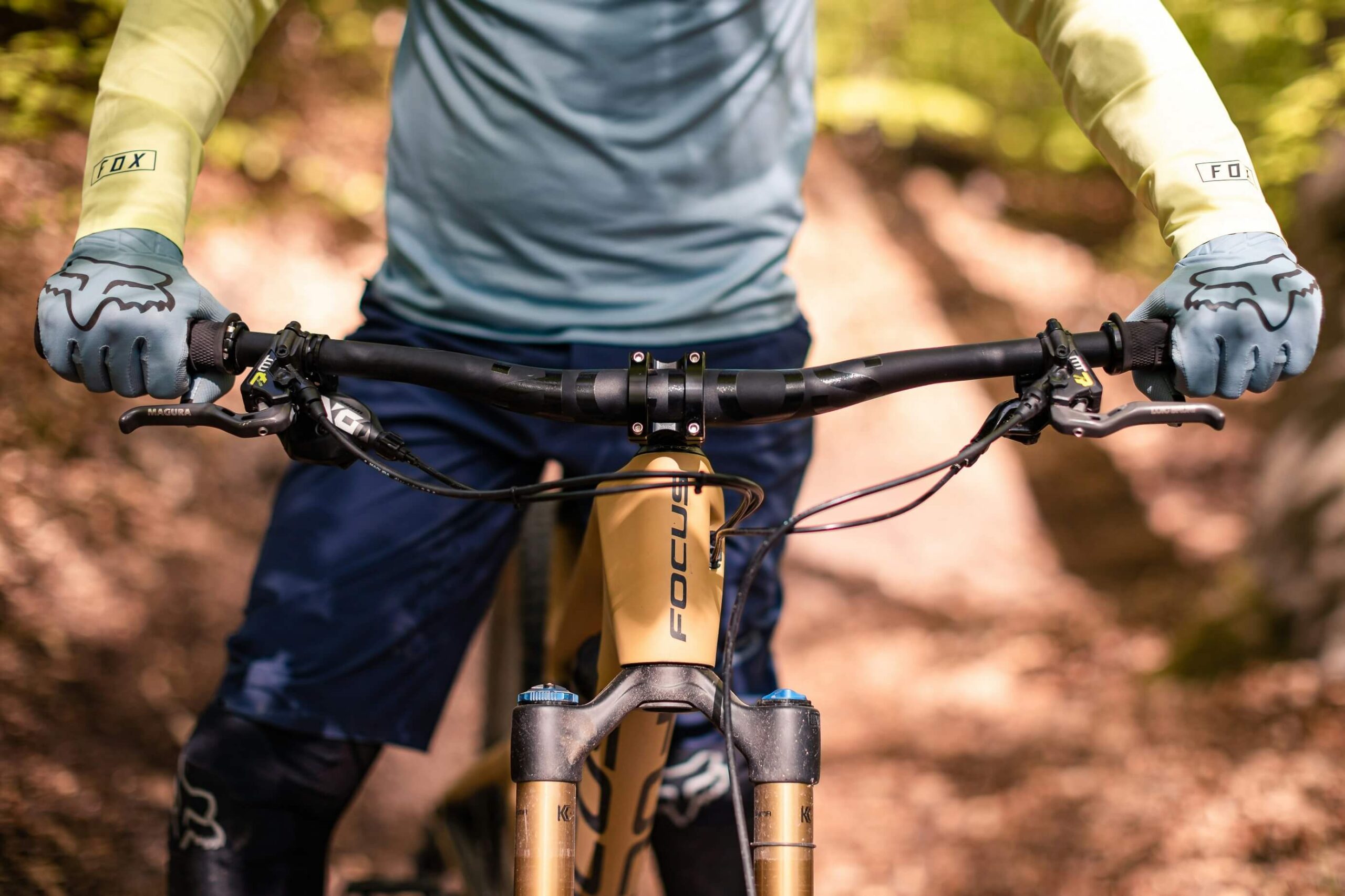Table of Contents
Finding the Perfect Mountain Bike Gloves
In the world of mountain biking, the right gear can make all the difference in your ride’s quality, safety, and enjoyment. Among the abundance of accessories available, mountain bike gloves stand out for their functional importance. This blog post dives into the critical role gloves play in mountain biking, addressing common inquiries about their necessity, the types suitable for different biking conditions, and the rationale behind their use. By exploring these aspects, we aim to guide you in making informed decisions about your mountain biking gear, with a special focus on finding the perfect pair of gloves to enhance your riding experience.
What Gloves Should I Wear for Mountain Biking?
When selecting mountain bike gloves, consider the type of terrain you’ll be navigating, the weather conditions, and your personal comfort preferences. For rugged terrains and cooler climates, full-finger gloves offer comprehensive protection and warmth. In contrast, half-finger gloves might be preferable for lighter trails and warmer weather, providing breathability while still offering grip and palm protection.
Should I MTB with or Without Gloves?
Riding with gloves is highly recommended for mountain bikers of all levels. Gloves protect your hands from blisters, abrasions, and in the unfortunate event of a fall, they can prevent serious injuries. Moreover, they improve grip and control over your bike, ensuring a safer and more comfortable ride, especially on long or challenging trails.
Why Do Mountain Bikers Need Gloves?
Mountain bike gloves are essential for several reasons: they enhance grip on the handlebars, provide cushioning against vibrations and impacts, and protect hands from harsh environmental elements. They also safeguard against cuts and bruises in case of falls or when brushing against vegetation. Essentially, gloves are a critical element of a mountain biker’s gear, contributing to both performance and safety.
The Significance of Grip in Mountain Biking
In mountain biking, control is paramount, and a significant portion of that control comes from your grip on the handlebars. A reliable grip can enhance maneuverability, increase safety, and improve your overall riding experience. This section explores the critical role grip plays in mountain biking and how the right gloves can make all the difference.

Why Is Grip So Important in Mountain Biking?
Grip is the cornerstone of mountain biking that directly affects your bike’s control and stability, especially on challenging terrains. A secure grip allows for precise steering, braking, and handling, enabling riders to navigate through technical sections with confidence. Gloves designed for mountain biking provide the necessary traction on the handlebars, even in wet or muddy conditions, ensuring that your hands stay in place no matter the trail’s challenges.
Opportunity for GRIP STRENGTH linking to health and fitness internally, an image or video: Show a close-up of hands gripping mountain bike handlebars on a rough trail, illustrating how gloves maintain grip even in demanding conditions.
How Do Gloves Enhance Grip on the Handlebars?
Mountain bike gloves are engineered with materials and designs that optimize hand-to-handlebar interaction. Features like silicone grippers on the fingers and palms, and the use of tacky materials, ensure that your hands remain firmly in place. Furthermore, gloves can absorb sweat and moisture, preventing slippage and maintaining a consistent grip throughout your ride.
Opportunity for internal linking: Link to a detailed review or comparison of different glove materials and their impact on grip.
Can Gloves Improve Handling and Reduce Fatigue?
Absolutely. Gloves not only enhance grip but also contribute to better handling and reduced hand fatigue. The padding in gloves can dampen vibrations and shock from the terrain, minimizing strain on your hands and arms. This shock absorption is crucial for long rides and rough trails, as it helps prevent numbness and ensures you can maintain a strong grip for the duration of your ride.
Opportunity for additional ideas: Include a sidebar or infographic on “Ergonomics of Mountain Biking: How Gloves Reduce Fatigue,” highlighting the biomechanical benefits.
By understanding the importance of grip in mountain biking and how the right gloves can enhance it, riders can make informed decisions about their gear, leading to a safer and more enjoyable experience on the trails.
Comfort: A Non-Negotiable Factor for Long Rides
Long rides demand not just endurance and skill but also gear that supports extended periods of activity. Comfort in mountain biking gear, especially gloves, is essential to prevent distractions and enhance the riding experience. This section delves into why comfort is crucial in mountain bike gloves and how to ensure your gloves provide it.
Why Is Comfort So Crucial in Mountain Bike Gloves?
Comfort in mountain bike gloves is vital for several reasons. Firstly, comfortable gloves can prevent blisters and chafing, common issues during long rides. They also ensure that your focus remains on the trail rather than on any discomfort in your hands. Additionally, gloves that fit well and feel good can enhance your overall control and confidence on the bike, making your rides more enjoyable.
Opportunity for an image: A side-by-side comparison of a hand with and without blisters, emphasizing the importance of comfortable gloves.
What Features Contribute to Glove Comfort?
Several features contribute to the comfort of mountain bike gloves, including breathable materials that keep your hands cool and dry, adequate padding that cushions against vibrations, and a snug yet flexible fit that allows for natural hand movements. Gloves with ergonomic designs that mimic the hand’s natural resting position can also significantly increase comfort levels.
You can find more information about materials in our post “Breathable, Durable, Flexible: The Ideal Fabrics for MTB Gloves“.
Opportunity for internal linking: Link to an in-depth article on the technology behind breathable fabrics used in sports gear.
How to Ensure Your Mountain Bike Gloves Fit Perfectly?
A perfect fit is paramount for comfort. Gloves should be snug enough to prevent fabric bunching, which can lead to irritation, but not so tight as to restrict movement or circulation. It’s essential to measure your hand and refer to sizing charts when purchasing gloves. Additionally, trying on different styles and brands can help you find the best fit for your unique hand shape.
Opportunity for additional ideas: Create a downloadable guide or infographic titled “The Perfect Fit: How to Measure Your Hand for Mountain Bike Gloves,” providing step-by-step instructions for readers.
Comfort isn’t just a luxury in mountain biking—it’s a necessity. By choosing gloves that prioritize comfort, riders can ensure longer, more enjoyable rides without the distraction of uncomfortable gear.
Protection: Beyond the Basics
Mountain biking is an adventurous sport, but with adventure comes the risk of falls and injuries, particularly to the hands which are often the first point of contact in a fall. Protection offered by mountain bike gloves goes beyond the basics, safeguarding your hands from cuts, abrasions, and more severe impacts. This section explores the protective features of mountain bike gloves and why they are indispensable for every rider.
How Do Mountain Bike Gloves Provide Protection?
Mountain bike gloves are designed with features such as reinforced padding on the palms and knuckles to absorb shocks and impacts, reducing the risk of injuries. Durable materials and construction prevent abrasions and cuts from encounters with the ground or vegetation. Furthermore, some gloves include wrist support to reduce the risk of sprains or strains during falls.
Opportunity for an image: A diagram highlighting the protective features of a mountain bike glove, such as reinforced padding and durable materials.
What Types of Injuries Can Gloves Prevent?
Gloves can significantly reduce the risk of common mountain biking injuries such as scrapes, bruises, and cuts. They also help prevent blisters from prolonged gripping of the handlebars. In more severe cases, gloves can mitigate the impact force during a fall, protecting against more serious injuries like fractures or deep lacerations.
In this 2013 study, conducted by Kevin Bush, Steve Meredith, and Daniel Demsey, there’s been a prospective survey of all hand and wrist injuries sustained while participating in recreational mountain biking over a 12-month consecutive period, in conclusion advocating for the use of protective garments and the need for further research and development of equipment to reduce injury.
Are There Specialized Gloves for Different Riding Conditions?
Yes, mountain bike gloves are tailored for various riding conditions. For example, gloves designed for downhill or aggressive trail riding often have more robust protection, such as extra padding and armor-like features, to withstand high-impact falls. Conversely, gloves for cross-country or casual trail riding might focus more on comfort and breathability while still offering essential protection.
Opportunity for additional ideas: Include a comparison chart or video review showcasing gloves designed for different mountain biking disciplines, highlighting their protective features.
Protection is a critical component of mountain bike gloves, providing a safety net that allows riders to push their limits with confidence. By choosing the right gloves with adequate protective features, mountain bikers can enjoy the thrill of the ride while minimizing the risk of injuries.
How to Choose the Right Mountain Bike Gloves
Selecting the perfect pair of mountain bike gloves is essential for enhancing your riding experience. Gloves should meet your specific needs based on the three pillars of grip, comfort, and protection. This step-by-step guide will help you navigate through the choices, considering factors like weather conditions, riding style, and personal preferences, to find gloves that are just right for you.
What Factors Should I Consider When Choosing Mountain Bike Gloves?
- Riding Style: Identify your primary style of riding. Are you into aggressive downhill rides, cross-country, or casual trail riding? Different styles demand different levels of protection, grip, and comfort.
- Weather Conditions: Consider the typical weather conditions you ride in. For colder climates, you’ll need gloves that offer insulation, while in warmer conditions, look for gloves with breathable materials.
- Protection Needs: Assess the level of protection you need based on the terrain and your riding intensity. More technical and challenging trails might require gloves with enhanced protective features.
Opportunity for an image or infographic: A visual guide showing different gloves suited for various riding styles and conditions.
How Do I Ensure the Gloves Fit Well?
- Measure Your Hand: Use a measuring tape to measure around the widest part of your hand, excluding the thumb. Compare this measurement with the sizing chart provided by the glove manufacturer.
- Try Them On: If possible, try on several pairs to see how they feel. Gloves should fit snugly without restricting movement or cutting off circulation.
- Check for Flexibility: Make sure you can comfortably make a fist and flex your fingers. This ensures you can grip the handlebars effectively.
Opportunity for additional ideas: Create a video tutorial on how to measure your hand for gloves and what to look for in a good fit.
How Can I Balance Grip, Comfort, and Protection in My Choice?
- Prioritize Based on Need: Depending on your riding style and conditions, prioritize which of the three pillars is most important for you. For instance, aggressive riders might prioritize protection, while cross-country riders may focus more on comfort and grip.
- Look for Multi-Feature Gloves: Many gloves are designed to offer a balance of grip, comfort, and protection. Look for gloves that highlight these features in their product descriptions.
- Read Reviews and Product Comparisons: Gain insights from other riders’ experiences by reading product reviews and comparisons. This can help you understand how well a glove performs in real-world conditions.
Opportunity for outgoing links: Link to reputable review sites or forums where riders discuss their experiences with different gloves.
Choosing the right mountain bike gloves involves a careful consideration of your riding style, the typical weather conditions you face, and your personal needs for grip, comfort, and protection. By following this guide, you can narrow down your options and select a pair of gloves that will serve you well on the trails, enhancing both your performance and your enjoyment of the sport.
Conclusion: Empowering Your Ride with the Right Gloves
In the realm of mountain biking, the significance of choosing the right gloves cannot be overstated. The perfect pair not only enhances grip, comfort, and protection but also elevates your overall riding experience, allowing you to tackle trails with confidence and endurance. Remember, the ideal gloves for you are the ones that meet your specific needs, taking into account your riding style, the typical weather conditions you encounter, and the unique demands of the terrain you love to explore. By carefully considering these factors and following the guidelines outlined in this guide, you’re well on your way to finding gloves that feel like a natural extension of your hands, perfectly suited to your mountain biking adventures.
As you gear up for your next ride, consider how your gloves are contributing to your performance and safety. The right pair is out there, ready to transform your mountain biking experience.
Can Mountain Bike Gloves be used for other Sports?
Yes, mountain biking gloves can often be used for other sports, especially those requiring grip and hand protection, such as cycling, BMX, and even some forms of climbing. However, it’s important to ensure that the gloves meet the specific requirements and safety standards of the sport in question.
How Often Should I Replace My Mountain Bike Gloves?
The frequency of replacement depends on the usage intensity and the glove’s material and quality. Regular riders might find they need new gloves every season or two due to wear and tear. Inspect your gloves regularly for signs of damage or reduced functionality, and replace them when necessary to maintain optimal performance and protection.
Is it Worth Investing in Waterproof Mountain Bike Gloves?
If you frequently ride in wet conditions, investing in waterproof gloves can be a game-changer. They keep your hands dry, maintaining grip and comfort even in the rain or when crossing streams. While they might come at a higher price point, the benefits they offer in terms of comfort and control in wet conditions can significantly enhance your riding experience.
Opportunity for internal linking: Consider linking to a detailed review or guide on the best waterproof mountain bike gloves currently on the market.





